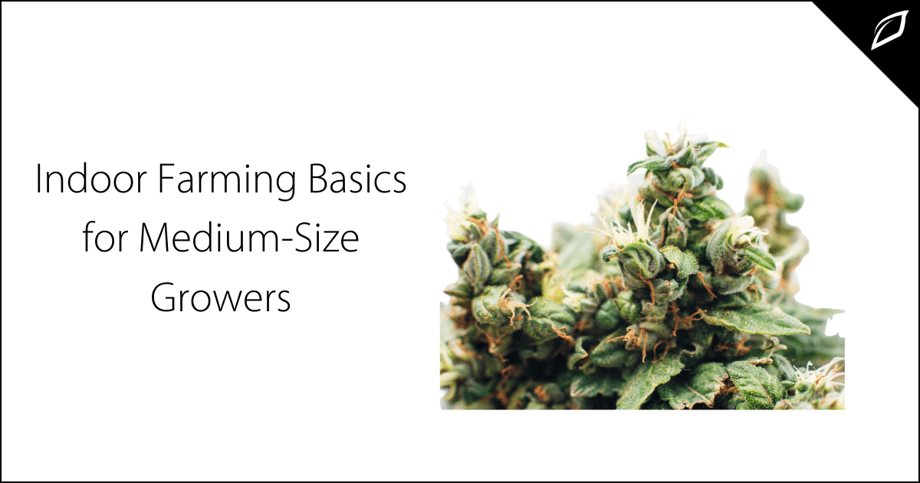
When people talk about agriculture, sunshine and rain seem like basic ingredients. That’s typically true—but only up to a point. Increasing numbers of growers are finding indoor farming to be a powerful and profitable alternative to tilling the soil outdoors.
Let’s explore three basic questions around indoor farming. First we’ll ask why an indoor farm might be an attractive option for a medium-sized grower. Then we’ll look at the “how,” considering grow models and business options for the indoor agriculturalist. Finally, we’ll take a look at the ways emerging technologies can drive productivity and profitability in the indoor farm.
Why Indoor Farming?
By growing indoors, a farmer can control and manage some of the most costly and complex variables that typically erode the bottom line for an agricultural enterprise. Rather than be subject to the vagaries of weather, indoor farming simplifies growing, thus taking many unknowns out of the equation.
For example, an indoor farm may still use sunlight as its primary lighting: That’s what a greenhouse does, for example. But with an indoor grow, the farmer isn’t tied to the sun as the only source of lighting. Supplemental lighting can ensure steady growing at a consistent pace, regardless of the weather outdoors.
Other variables such as rainfall, pests, and temperature also profoundly impact an outdoor grow. Too much or too little rain can drastically alter production in the course of a growing season. With indoor farming, these variables can be tightly managed and controlled. This helps drive higher yields along with more predictable costs of operations. The result: better business outcomes all around.
Indoor farming also can help reduce the cost of production by lowering the demand for labor. A more compact, more contained growing environment often can be managed with fewer hands, thus saving the farmer money and making the operation less dependent on labor markets that can often be unreliable during seasons of peak demand.
How to Get Started
One of the first steps in setting up an indoor farm will be the selection of a farming setup. This can be a simple one-room operation or an elaborate greenhouse. Some farmers opt for a “container” environment, literally reusing large shipping container as indoor growing spaces. Such containers are readily available, inexpensive, and fairly portable, thus making them an attractive option.
Other growers may want consider vertical agriculture: Growing arrangements that increase growing density by working crops vertically rather than horizontally. Vertical growing helps maximize available space, thus creating dense indoor growing without adding significantly to the labor burden.
Other startup considerations, beyond the type of indoor farm, include the type of crop, the local business climate, labor supply, and demand for product. The savvy grower will align all these factors and choose a farming model that best supports the desired crop type in the local market.
Role of Technology
Indoor farming offers a unique opportunity to control the variables that eat away at agricultural profitability. Technology can maximize that opportunity, thus bringing to bear a range of tools and techniques that take the guesswork out of farming. By automating and regulating key variables, farmers can use indoor growing as a way to grow more aggressively, reduce the demand for pricey (and often unavailable) labor, and, ultimately, drive profitability.
Automation can be applied to environmental factors such as lighting, irrigation, soil management, and pest control.
Sensor systems can be implemented to monitor these key factors and send automatic alerts to the grower via cell phone app when action is needed. Modern systems also can automate management of environmental factors, such as irrigating on schedule or adjusting temperature and humidity throughout the day.
Although automation and sensor-driven systems can be a boon to any grower, for the farmer who is considering an indoor grow, such systems can be especially advantageous. An indoor farm by its nature is more easily regulated and less prone to vagaries of weather. Insulted from the natural environment, it’s inherently more manageable, and the best way to leverage that advantage is through management tools.
An indoor grow offers a modern, mechanized means of generating the greatest possible yield and driving the highest return on investment. Although an indoor farm takes some thoughtfulness—the right crop in the right environment with the right controls—the end result can be both easier to manage and less expensive to operate than a costlier and more complex outdoor grow.











